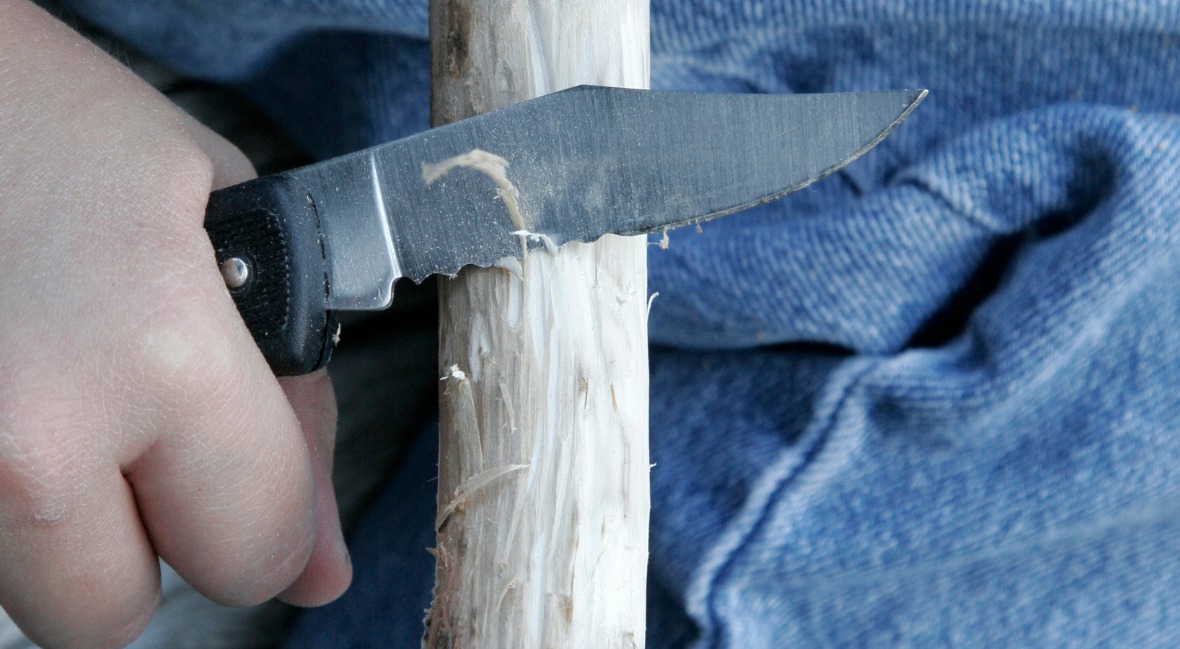In the world of culinary arts, the tools of the trade are just as critical as the skills of the artisan. For kitchen professionals, understanding the myriad of knife grinds is essential, and among them, the Scandi grind stands out as a topic of interest. This article will delve into the intricacies of the Scandi grind, exploring its applications in the kitchen, its benefits, and how it compares to other popular grinds.
The Scandi grind, known for its simplicity and effectiveness, is a single-sided bevel that extends from the edge to the spine without a secondary bevel. This design is particularly favored in woodworking and bushcraft knives for its ability to carve and slice with precision. However, the influence of the Scandi grind has permeated into the culinary world, offering certain advantages to kitchen professionals.

The Basics of Scandi Grind Explained
Before diving into its applications, let's understand what sets the Scandi grind apart. One of the key features is its flat bevel that forms a triangular shape, leading to a robust edge. Unlike convex or hollow grinds, the Scandi grind enhances durability, making it ideal for heavy-duty tasks.
For those in the kitchen, this translates to a knife capable of handling tough ingredients without losing its edge. Whether slicing through thick cuts of meat or chopping dense vegetables, a Scandi ground knife maintains its sharpness longer, reducing the need for frequent sharpening.
Applications in the Kitchen
While the Scandi grind is traditionally associated with outdoor knives, its application in the kitchen is gaining traction. Professionals appreciate the grind's ability to deliver clean cuts with minimal effort. Its design allows for easy resharpening, a crucial factor in maintaining knife efficiency in busy kitchen environments.
For chefs who prioritize precision and control, the Scandi grind offers an unparalleled cutting experience. Its straightforward design ensures that the knife glides through food with ease, a feature highly valued during long prep sessions. To understand more about how different grinds compare, you might be interested in our detailed look at blade grinds.
Comparisons with Other Grinds
The kitchen realm is vast, and so are the options for knife grinds. Comparing the Scandi grind to others, such as the flat and hollow grinds, can help kitchen professionals make informed decisions.
The flat grind, for instance, is known for its versatility and is often used for chefs' knives. However, it lacks the durability of the Scandi grind. On the other hand, the hollow grind, with its razor-sharp edge, excels at slicing thin cuts but may not stand up to tougher tasks. The Scandi grind strikes a balance, offering both sharpness and robustness.
Maintaining a Scandi Ground Knife
Proper maintenance is key to prolonging the life of any knife, and Scandi ground blades are no exception. Regular honing and occasional sharpening keep the edge in peak condition. For kitchen professionals, investing time in learning these skills pays dividends in performance and longevity.
Sharpening a Scandi grind requires a bit of practice but is straightforward. The lack of a secondary bevel means you can lay the knife flat against a sharpening stone, allowing for consistent results. For more insights into knife maintenance, check out our guide on blade coatings.
Choosing the Right Knife
When selecting a Scandi ground knife for kitchen use, consider the tasks you perform most frequently. A larger blade may be beneficial for cutting through large pieces of meat, while a smaller one might be better suited for fine slicing or intricate work. It's also important to consider the handle design, as a comfortable grip enhances control and reduces fatigue during prolonged use.
For those interested in exploring further, the advantages of both fixed and folding knives are discussed extensively in this comparison.

Frequently Asked Questions
What is a Scandi grind best for?
A Scandi grind is best for tasks that require precision and durability. It's ideal for heavy-duty cutting, such as slicing through dense vegetables or meats, due to its robust edge.
How do I maintain a Scandi grind knife?
Maintaining a Scandi grind knife involves regular honing and sharpening. Lay the knife flat against a sharpening stone to maintain the flat bevel, ensuring consistent edges.
Can a Scandi grind be used in professional kitchens?
Yes, a Scandi grind is suitable for professional kitchens, especially for tasks that demand a durable edge. Its ability to maintain sharpness and ease of sharpening makes it a valuable tool for chefs.
This article contains affiliate links. We may earn a commission at no extra cost to you.


























